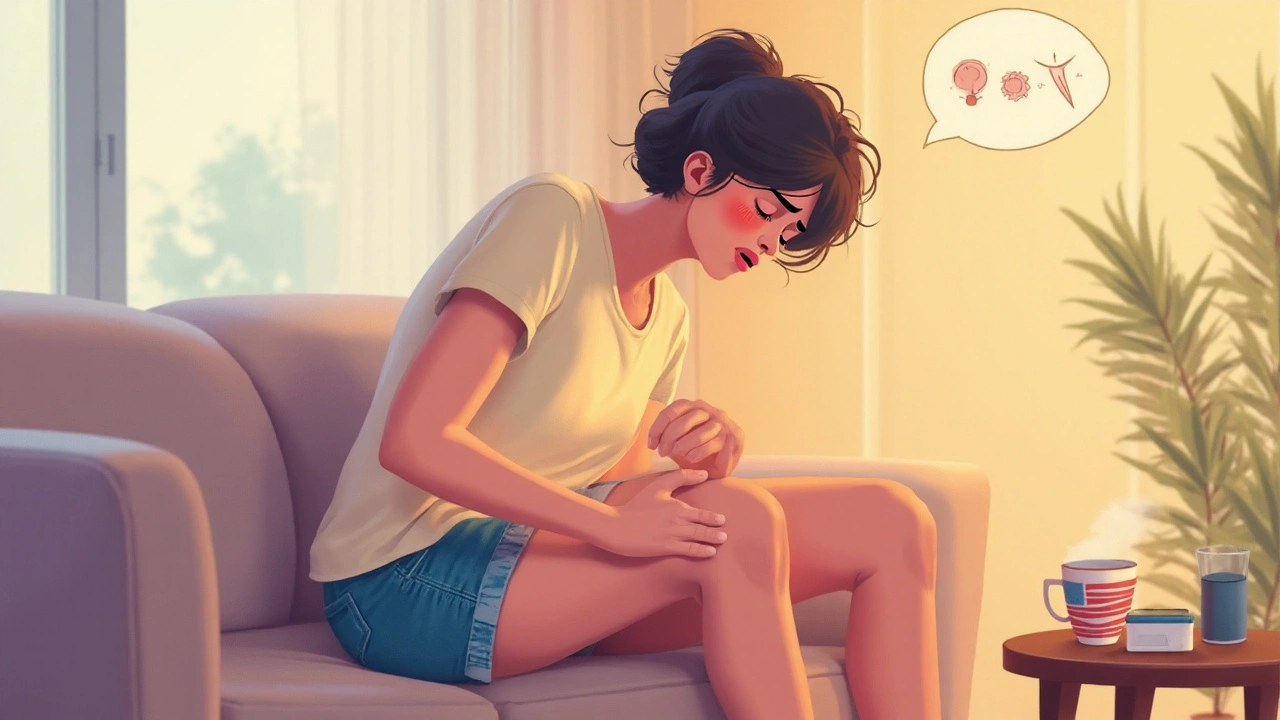Pruritus Ani: Causes, Relief, and When to See a Doctor
When dealing with pruritus ani, itching around the anal opening that can range from mild annoyance to severe discomfort. Also known as anal itching, it often signals an underlying skin or gastrointestinal issue. Understanding the root causes helps you choose the right treatment instead of just masking the symptom. This guide breaks down the most common triggers, practical self‑care steps, and red flags that mean it’s time to see a professional.
One of the most frequent culprits is hemorrhoids, swollen vascular cushions in the distal rectum that can bleed, swell, and irritate surrounding skin. Hemorrhoids increase friction and moisture, creating an ideal environment for the itch to flare. If you notice a lump, occasional bleeding, or a feeling of fullness, hemorrhoids are likely influencing your pruritus ani. Simple measures like warm sitz baths and high‑fiber diets often ease both the swelling and the itch.
Another common trigger is a fungal infection, most often caused by Candida species that thrive in warm, moist areas of the body. When Candida overgrows, it can cause a red, itchy rash that spreads to the perianal skin. Antifungal creams applied twice daily and keeping the area dry usually clear the infection within a week. If the itching returns quickly, you might be dealing with another overlapping factor.
Skin irritation from contact dermatitis, an allergic or irritant reaction to soaps, wipes, or laundry detergents that damages the protective skin barrier, is also a key player. Even fragrance‑free products can contain chemicals that disrupt the skin’s natural moisture balance. When you suspect a reaction, switching to hypo‑allergenic cleansers and using a barrier cream can restore comfort fast.
Lastly, an anal fissure, a small tear in the lining of the anal canal often caused by hard stools or straining, can produce sharp pain and intense itching during and after bowel movements. The fissure’s edges become inflamed, sending itch signals to the brain. Gentle stool softeners, increased fluid intake, and topical nitroglycerin ointments help the tissue heal while reducing the itch.
Practical steps to calm the itch
Beyond targeting specific causes, good hygiene is a universal defense. Clean the area with lukewarm water only, avoid harsh soaps, and pat dry rather than rubbing. Over‑the‑counter options like zinc‑oxide creams or hydrocortisone 1% can soothe inflammation, but they’re best used for short bursts to prevent skin thinning. If symptoms linger beyond two weeks despite these measures, a healthcare provider can run a simple exam and, if needed, prescribe stronger topical steroids or prescribe a stool softener regimen.
Understanding that pruritus ani often results from a mix of factors—vascular (hemorrhoids), microbial (fungal infection), allergic (contact dermatitis), and mechanical (anal fissure)—helps you approach treatment methodically. Below you’ll find articles that dive deeper into each of these triggers, offer step‑by‑step care plans, and explain when specialist care becomes essential. Browse the collection to get the detailed guidance you need to end the itch for good.
How Anal Itching Affects Mental Health - Causes, Symptoms & Coping Strategies
Explore how anal itching impacts mental well‑being, its causes, symptoms, and practical steps to manage both skin and emotional health.

